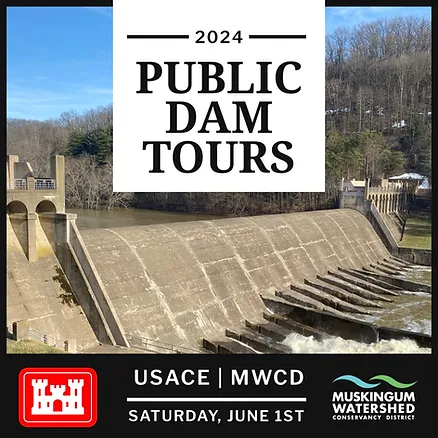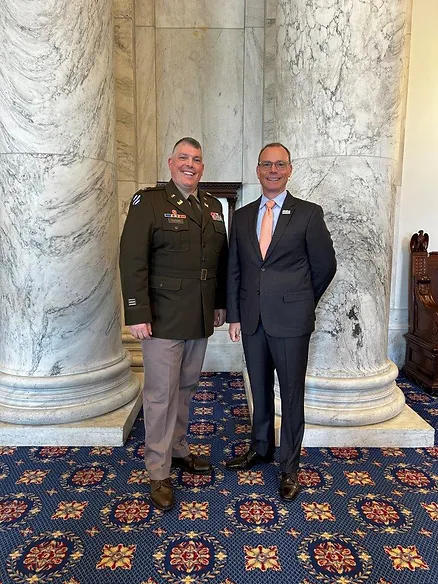 Friday, May 31 is National Dam Safety Day
Friday, May 31 is National Dam Safety Day
Floods are deadly weather disasters that kill more Americans every year than hurricanes or tornadoes. As leaders in organizations whose missions include protecting lives and property from flooding, we know firsthand the devastation that flooding can inflict on our communities, and in honor of National Dam Safety Day approaching on May 31, we want to recognize the importance of that significance. Floods can literally wash away lives, homes, businesses, public infrastructure and the environment. Moreover, they pose a significant threat to communities themselves, and can forever alter the character of the places we call home.
To the challenge of preventing and reducing the impact of floods, the U.S. Army Corps of Engineers (USACE) and Muskingum Watershed Conservancy District (MWCD) each apply our respective expertise in engineering and water resource management, and a range of sophisticated—and expensive—tools including levees, dams, and flood control structures. Even with our technical know-how and resources, however, successful outcomes often depend on our working together. And sometimes, in spite of all of our best efforts and collaboration, Mother Nature wins the battle.
For more than 90 years the USACE and MWCD have been partners in flood mitigation in Eastern Ohio. The Muskingum River watershed is historically prone to flooding, and in 1913 a flood in the watershed took the lives of nearly 500 residents, destroyed 69 bridges in the area and effectively wiped away Ohio’s canal system. The cost in property destroyed and resulting economic losses exceeded $300 million. This event, which remains as the greatest natural disaster in Ohio history to this day, was the impetus to creating the MWCD and starting its collaboration with the USACE.
The USACE operates and maintains the 16 dams on MWCD property and the MWCD cost shares major dam safety modifications as well as owns and operates the lakes and parks.
Just as both agencies work in close collaboration with each other, we both also partner with local organizations throughout Eastern Ohio to advance flood mitigation and prevention. First, there isn’t a monopoly on good ideas or insights, so having other frontline partners expands what you know and how fast you know it. Despite all the technology we have today, it doesn’t replace firsthand, human intelligence when working in the natural environment where things change rapidly. Second, local partnerships foster community engagement and support, which is essential for the success and sustainability of flood management initiatives. Finally, local partnerships enable the pooling of resources and expertise, maximizing the effectiveness of flood mitigation efforts.
Though the Corps of Engineers and MWCD are each large organizations, with strong budgets and the ability to hire experts in dam operations and watershed management, we still lean on each other to protect Eastern Ohio residents and their homes, farms and businesses. Similarly, together, and separately we have a network of smaller, local partners that share our missions, and which amplify our mutual success—all for the purpose of protecting lives and property. This also reinforces the fact that the best and most effective responses to disasters, should they occur, start at the local level, and are amplified by external organizations.
The lesson in all of this is that no single leader, government, or organization can ever have all the know-how it needs to fulfill such an essential, complex, and multi-faceted mission as protecting Eastern Ohio from flooding. When other missions such as the conservation of wild spaces and recreation opportunities are added, the need for collaboration becomes even more true. We are proud of what our organizations have accomplished together and of the relationships that exist with other groups that share our mission. The example of the value and success of collaboration in natural resources management is an important one that we hope other organizations can learn and benefit from as we work to make Eastern Ohio a better, more prosperous place to live and work. We will stay connected and not rest on our laurels. We know there is more work to do and we, jointly with our local partners, will identify new opportunities and challenges and take actions to protect property and lives.
In addition, in partnership with the USACE and as part of MWCD’s 90th anniversary, we invite you to celebrate Dam Safety Day with a dam tour. Saturday, June 1 from 10:00am-2:00pm the Dover, Atwood, Bolivar, Clendening, Leesville, Pleasant Hill and Tappan dams will be open to the public to discover the power of collaboration between our organizations while learning about dam safety and history.
###
Craig Butler has a master’s degree in environmental science from Ohio University and is the former Director of the Ohio Environmental Protection Agency. He has served as CEO of the Muskingum Watershed Conservancy District since 2020.
###
Colonel Jayson Putnam is a graduate of the U.S. Military Academy at West Point and has a Master’s of Science Degree in Engineering Management from the University of Missouri-Rolla. He has led the U.S. Army Corps of Engineers Huntington District since 2021











